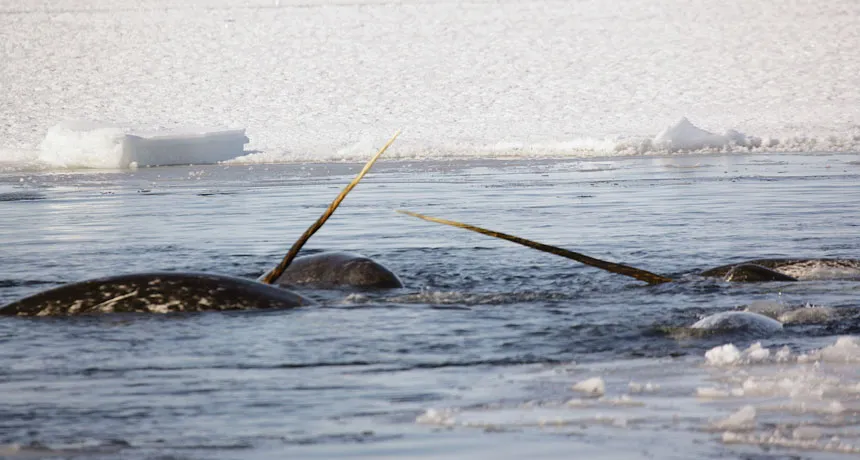Narwhals react to certain dangers in a really strange way
‘Unicorns of the sea’ fleeing humans show the physiological signs of also being frozen in fear

FREEZE AND FLEE Narwhals, mammals known as “unicorns of the sea” for their single tusk, have another oddity: Their hearts slow to near-arrest during frantic flights into the deep.
M.P. Heide-Jørgensen
When escaping from humans, narwhals don’t just freeze or flee.